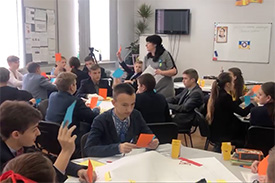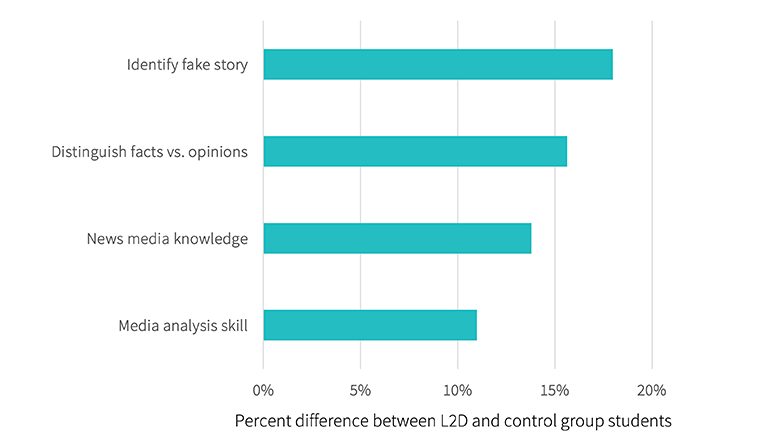Evaluation of Students’ Ability to Detect Misinformation After Learning Media Literacy Techniques in School
 This evaluation found improvements in students' ability to identify misinformation, propaganda, facts, opinions, and hate speech after teachers incorporated the Learn to Discern in Schools curriculum in their classes.
This evaluation found improvements in students' ability to identify misinformation, propaganda, facts, opinions, and hate speech after teachers incorporated the Learn to Discern in Schools curriculum in their classes.
Students who received this instruction also demonstrated higher levels of news media knowledge, better news analysis skills, and healthier media consumption habits compared to their peers in a controlled survey.
The project was adapted from the Learn to Discern skill-building methodology for media and information literacy.
Piloting the curriculum in 50 schools: Integrating media literacy training in existing classes
In this pilot, IREX and the Ukrainian Ministry of Education and Science worked with teachers in 50 schools across Ukraine to integrate media literacy lessons into existing courses on history, art, culture, and Ukrainian language and literature.
This model of integrating media literacy into existing courses reduced the burden on teachers and administrators. The pilot focused on 8th and 9th grade students.
The evaluation tested participants’ ability to detect and dissect information in traditional media and in social networks after one semester. It compared scores from participants and a control group.
The impact: Students were better able to identify facts, opinions, and misinformation
Compared to the control group, L2D participants were:
- Twice as likely to detect hate speech
- 18% better at identifying fake news stories
- 16% better performance at differentiating between facts and opinions
- 14% more knowledgeable about the of the news media industry
